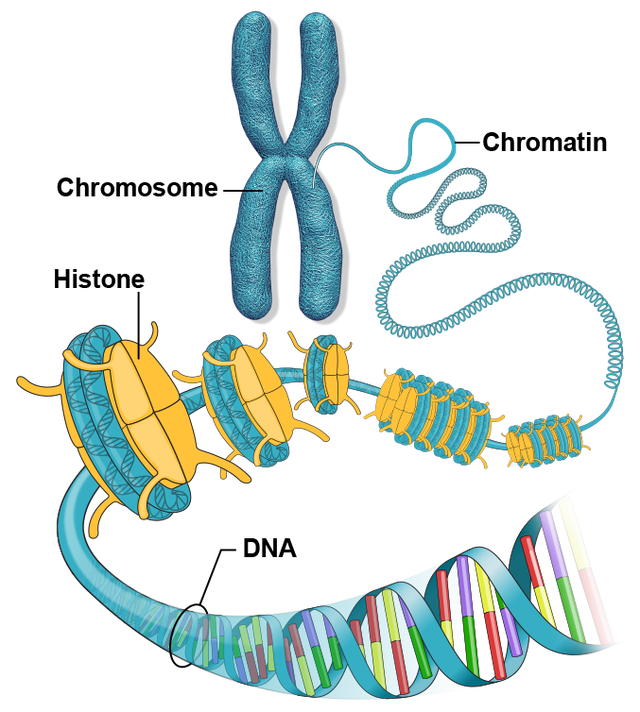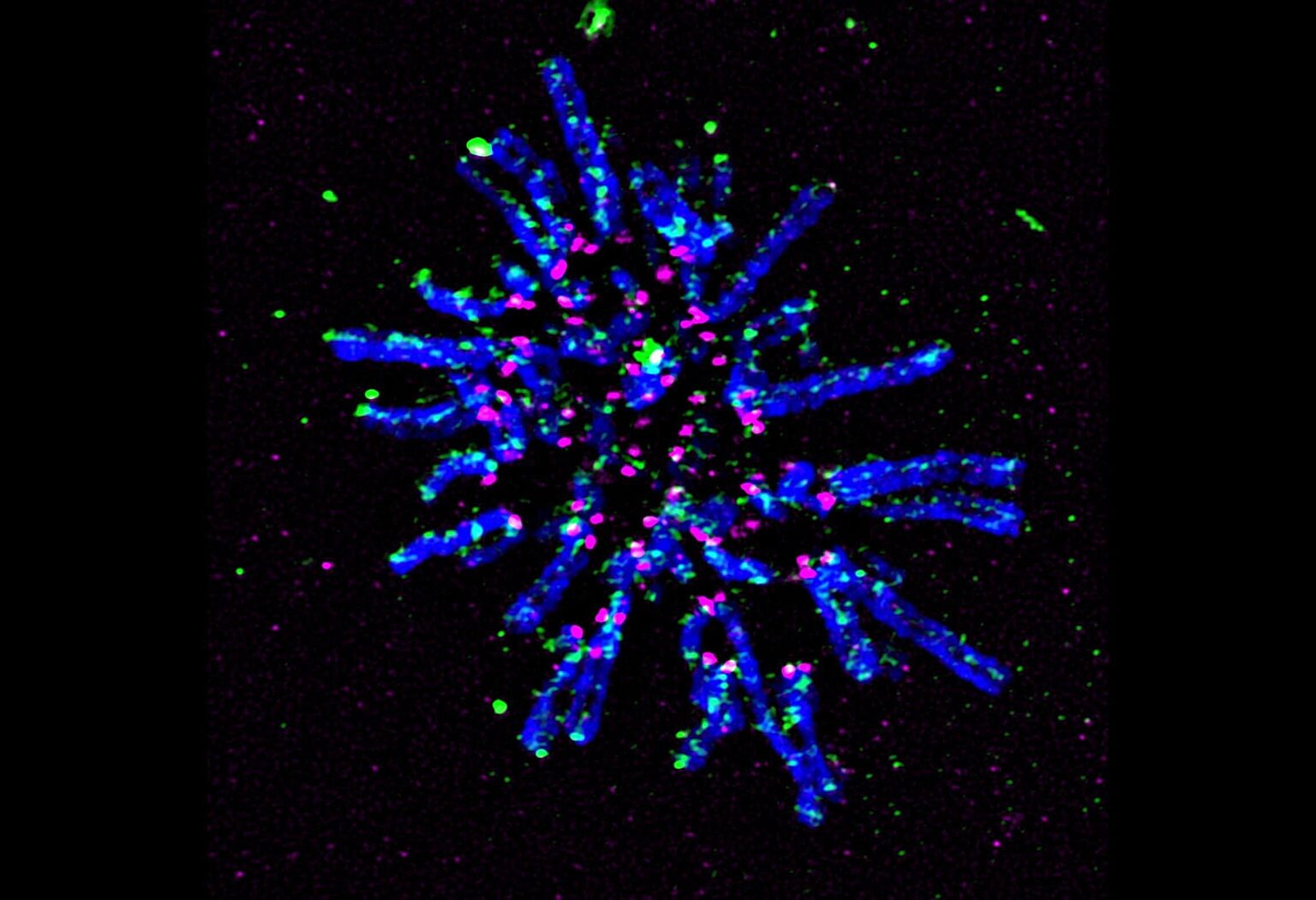Chromosomes have different levels of organization
At the simplest level, chromosomal DNA is the familiar double helix structure. However, to fit within the nucleus of a cell, chromosomes pack with proteins to achieve different and precise levels of organization. Double helical DNA is next wound tightly around proteins called histones, and at this stage, chromosomes more closely resemble a beaded necklace, where each bead is a DNA-histone structure called a nucleosome. Then, the strings of nucleosomes further coil and condense into a DNA-protein package called chromatin. To turn on a gene in a section of DNA, certain proteins must interact with chromatin to unwind it, making the gene accessible for producing a functional product.
Chromosomes and inheritance
Because we receive one chromosome from each parent, the two copies of a particular gene can vary slightly in sequence and function. In a simplistic example, if the two copies—also called alleles—of a gene for eye color both encode for blue, then that individual will have blue eyes. If one codes for brown and the other blue, their eyes will be brown due to the brown allele being dominant and the blue allele being recessive. However, if that individual then has children with a blue-eyed partner, their offspring will have a 50% chance of either blue or brown eyes. Quite often, more than one gene can coordinate to give rise to an observable trait, and eight different genes have been identified as contributing to eye color.
Do chromosome numbers vary between species?
Humans have 23 pairs of chromosomes, but the number of chromosomes can vary drastically in different species. For example, a cucumber has seven pairs, a starfish has 18 pairs, and dogs have 39 pairs. Chromosome number is not necessarily associated with overall genome size, where dogs have more chromosomes but approximately 20% less DNA. Human sex chromosomes—X and Y—are also unequal in size, which means a female has a slightly larger genome than a male. Chromosome shape is also variable—bacteria have circular chromosomes and the DNA within our mitochondria is arranged as a single circular chromosome.



